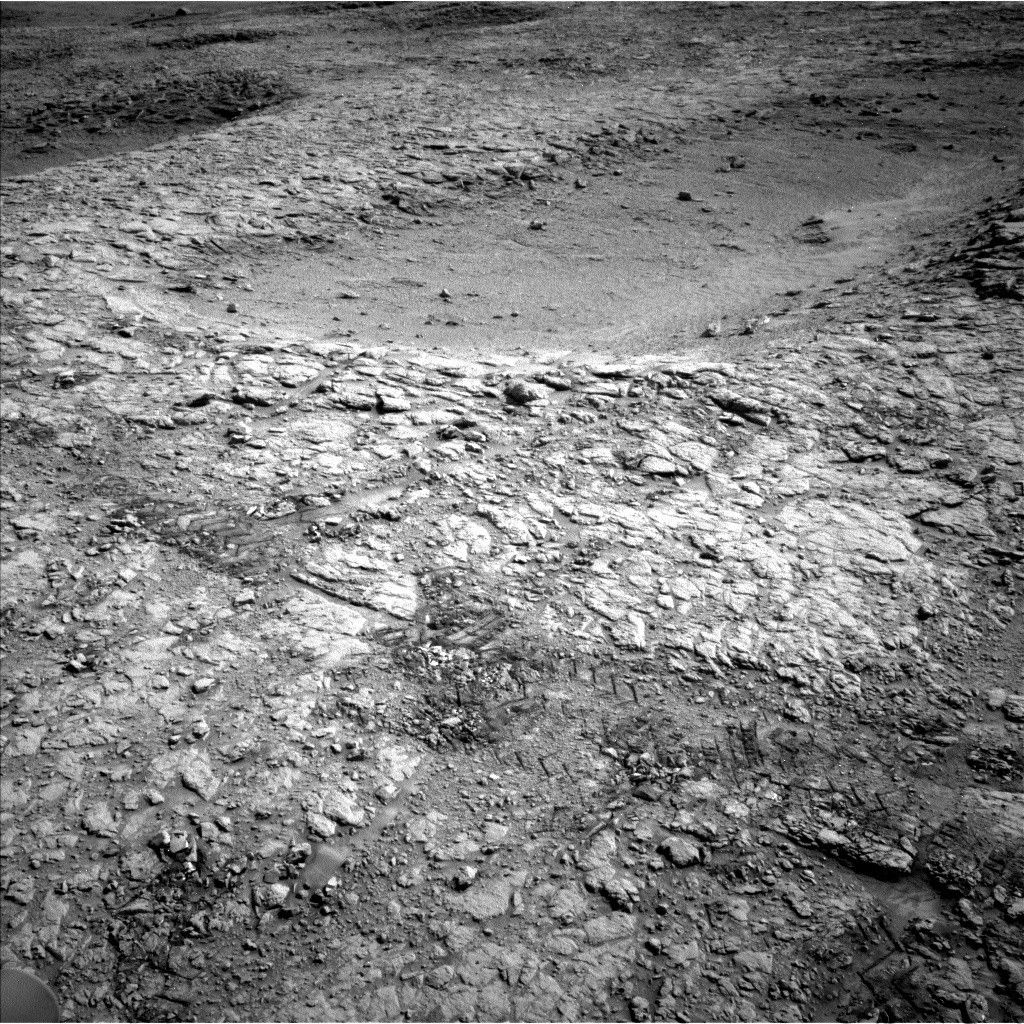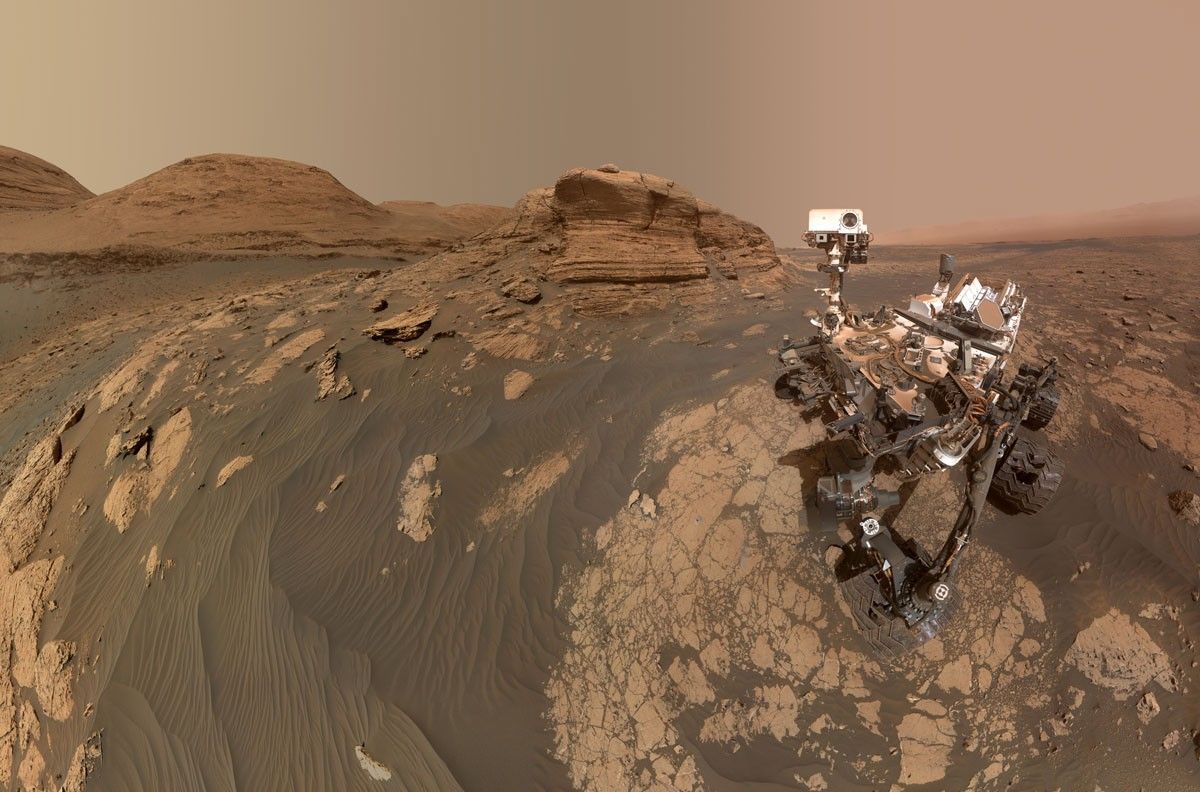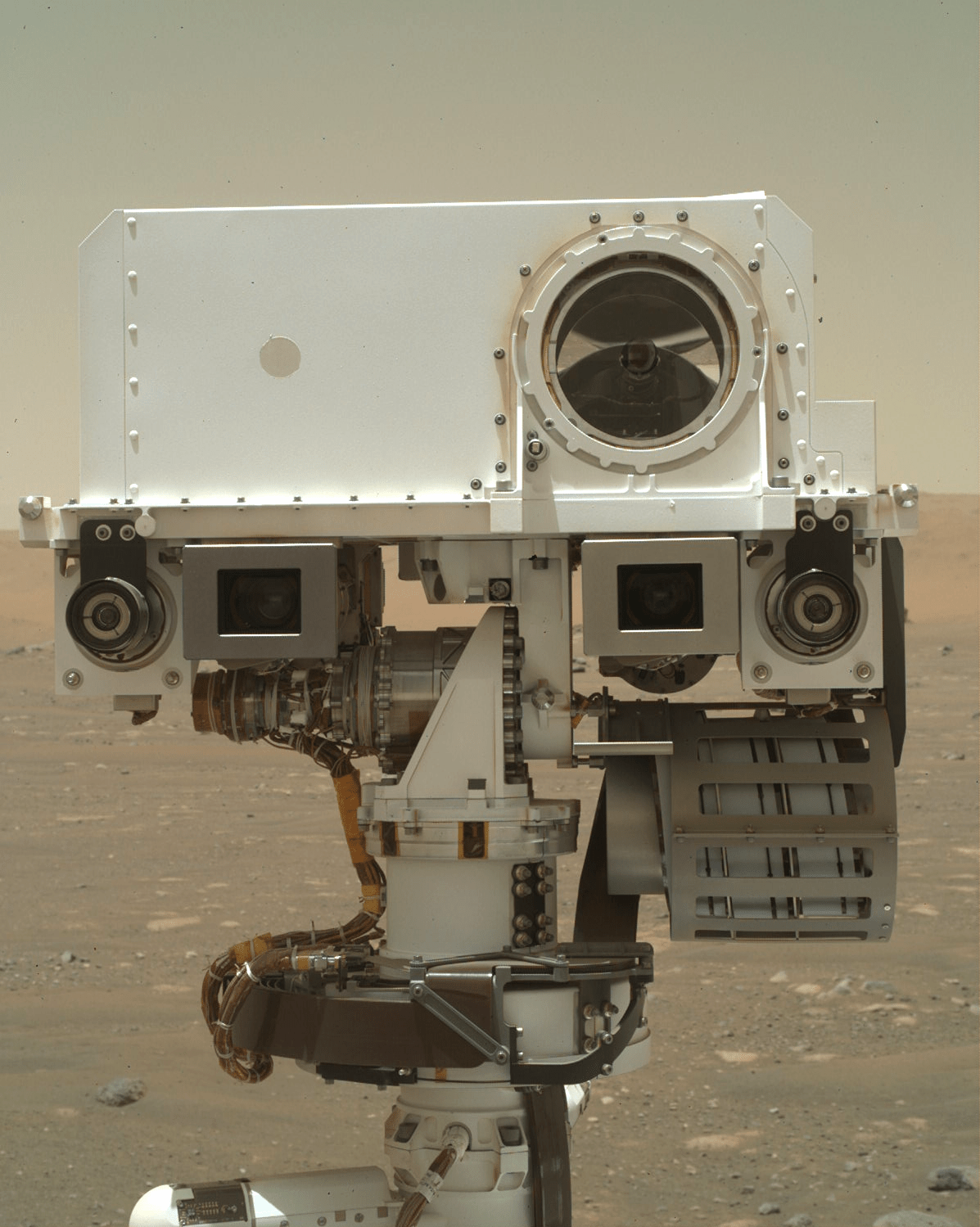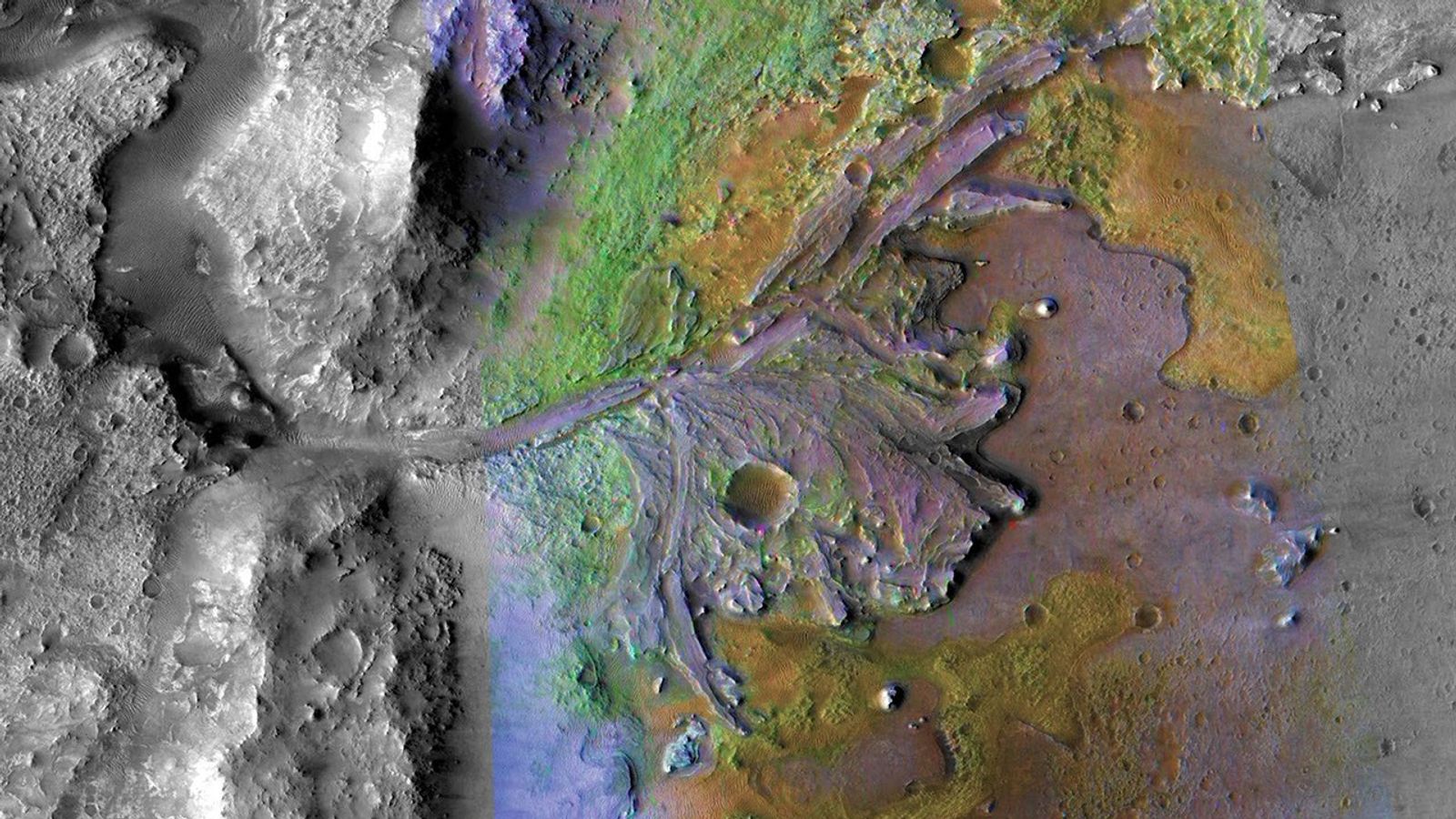As Curiosity continues on her journey up Mount Sharp (the mound in the centre of Gale crater), rocks we encounter contain evidence for changing environmental conditions. The fine-grained mudstones of the Murray formation show us that lakes were present in the past, whilst the sandstones of the Stimson formation are evidence for ancient dune fields.
During 2015-2017, we crossed the Bagnold dune field, a 35-km long by 1-2 km wide dune field that wraps around the northwest side of Mount Sharp. This was the first time that scientists have explored an active dune system on another planet. In the Martian fall/winter, we investigated two barchan dunes. Barchan dunes are crescent shaped and are formed by winds blowing in one direction, and when sediment supply is limited. Later on, during the Martian summer, we examined a linear dune. Linear dunes are formed by winds blowing in two directions, with more abundant sediment supply, and can be very long (on Earth, they can reach 160 miles in length e.g., Namib Sand Sea, Namibia).
Curiosity lived up to her official name "Mars Science Laboratory" for both parts of the campaign, utilizing almost every scientific instrument on board, plus the engineering cameras (Navcam and Hazcam) to collect observations and measurements. In a series of papers recently released, we present these results, looking at all aspects of the Bagnold dunes.
As we traversed the dune field and at each stop, we observed the physical properties of the sand dunes, such as grain size, rates of grain motion, and the overall bedform morphologies, using MAHLI, ChemCam, MARDI, Mastcam, Navcam, and REMS. We observed differences in wind activity levels, with lower wind and less movement of sand during the fall/winter than during the summer. Dust content (indicated by sulphur, chlorine and zinc levels, as measured by APXS; higher concentrations mean higher dust content) indicates that observed activity levels were higher in the linear dunes which were investigated during the summer (higher winds, less dust settling) and lower in the barchan dunes, which were investigated during the fall/winter.
We determined chemical composition, mineralogy and volatile content of sands using APXS, ChemCam, CheMin, DAN and SAM. My role as a member of the APXS operations team involved evaluating the composition of samples analyzed, comparing between the barchan and linear dunes, as well as sands previously analyzed by the Opportunity rover (at Meridiani Planum) and Spirit (at Gusev Crater). The basaltic Bagnold sands show subtle variations in mineralogy and chemistry, both between the barchan and linear dunes, but also depending on location within a dune. For example, ripple crests were often more coarse-grained and enriched in magnesium and nickel, whilst off-crest sands within the linear dunes were enriched in chromium. These variations may reflect sorting processes, or minor enrichments from local bedrock sources.
Our journey through the Bagnold Dunes has helped advanced our understanding of how winds shape modern Martian landscapes, and the properties of windblown materials, in the form of both the active Bagnold dunes and in ancient Martian dunes now preserved as rock in units such as the Stimson formation at Gale crater.
AGU Journals:
- Investigations of the Bagnold Dune Field, Gale crater ›
- Curiosity at the Bagnold Dunes, Gale Crater: Advances in Martian Eolian Processes ›
Written by Catherine O'Connell-Cooper, Planetary Geologist at University of New Brunswick































